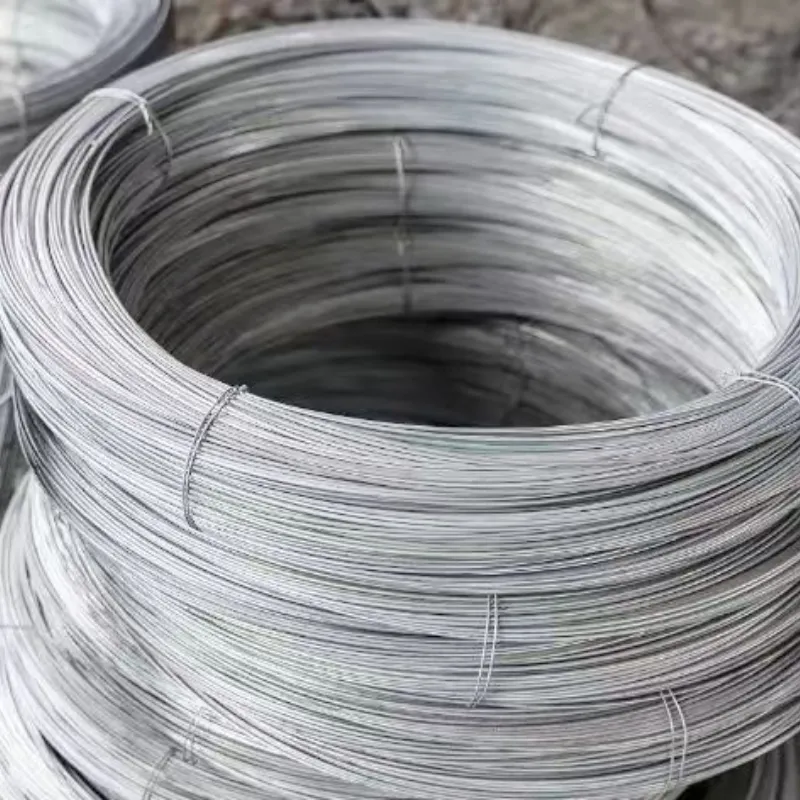-
 Phone:
Phone: -
 Email:
Email:

Galvanized Tie Wire for Rebar Applications in Construction and Structural Reinforcement
The Importance of Galvanized Rebar Tie Wire in Construction
When it comes to construction, the materials used can significantly influence the overall integrity and longevity of a structure. One such important material is galvanized rebar tie wire. Known for its durability, resistance to corrosion, and ease of use, galvanized tie wire plays a crucial role in the reinforcement of concrete structures.
Galvanized rebar tie wire is made from steel wire that has been coated with a protective layer of zinc. This galvanization process protects the wire from rust and degradation, making it suitable for use in various environments, including those with high moisture content or exposure to chemicals. In construction, this wire is primarily used to secure steel reinforcement bars (rebar) together, ensuring that the framework of concrete structures is robust and stable.
The use of galvanized rebar tie wire offers significant advantages. First, its corrosion resistance allows it to maintain structural integrity over time, particularly in marine or industrial settings where concrete may be exposed to harsh conditions. Unlike uncoated wire, which can rust and weaken over time, galvanized tie wire stays strong and reliable, offering peace of mind to builders and engineers.
Moreover, the application of galvanized rebar tie wire is straightforward. It can be easily bent, shaped, and attached to rebar, allowing for quick and efficient assembly of reinforcement grids. This ease of use can help speed up construction timelines, as workers can focus on the structural elements rather than struggling with complicated securing methods. Furthermore, its light weight facilitates transport across job sites, reducing the physical strain on laborers.
galvanized rebar tie wire

Environmental factors also play a crucial role in the necessity for galvanized rebar tie wire. In areas where concrete is exposed to moisture or saline conditions, corroded rebar can lead to significant structural failure. The eventual oxidation can cause concrete spalling, which compromises the integrity of the structure and could necessitate costly repairs or even complete reconstruction. By using galvanized tie wire, the risk of corrosion is minimized, thereby extending the life expectancy of concrete structures.
In addition to its practical benefits, galvanized rebar tie wire is also cost-effective. While it may have a slightly higher initial cost compared to standard tie wire, the long-term savings associated with fewer maintenance needs and increased durability make it a wise investment. In construction, where safety and reliability are paramount, this cost-effectiveness cannot be overlooked.
Another noteworthy aspect of utilizing galvanized rebar tie wire is its role in ensuring compliance with building codes and standards. In many regions, regulations require the use of materials that enhance the safety and longevity of structures. Using galvanized wire not only meets these requirements but also demonstrates a commitment to quality and safety that can be appealing to potential clients and customers.
In conclusion, galvanized rebar tie wire is an indispensable component in modern construction practices. Its resistance to corrosion, ease of use, environmental reliability, cost-effectiveness, and compliance with safety standards make it an essential choice for securely reinforcing concrete structures. As the construction industry continues to evolve, the emphasis on durable and sustainable materials will only grow, and galvanized rebar tie wire will undoubtedly remain a key player in enabling safe and resilient building practices. Choosing the right materials today ensures a stronger tomorrow for our infrastructure.
-
Wire Mesh for Every Need: A Practical SolutionNewsJul.25,2025
-
Steel Fences: Durable, Secure, and Stylish OptionsNewsJul.25,2025
-
Roll Top Fencing: A Smart Solution for Safety and SecurityNewsJul.25,2025
-
Cattle Farm Fencing Solutions for Maximum SecurityNewsJul.25,2025
-
Affordable Iron Binding Wire SolutionsNewsJul.25,2025
-
Affordable Galvanized Wire SolutionsNewsJul.25,2025
-
Wire Hanger Recycling IdeasNewsJul.25,2025








